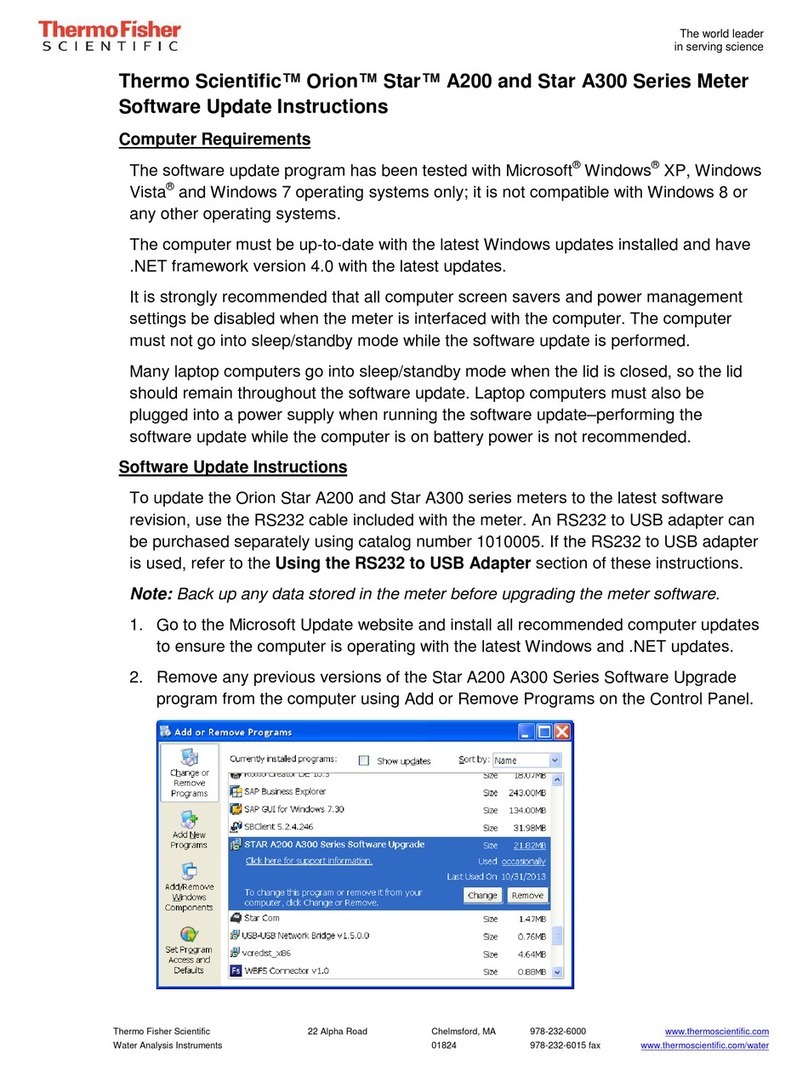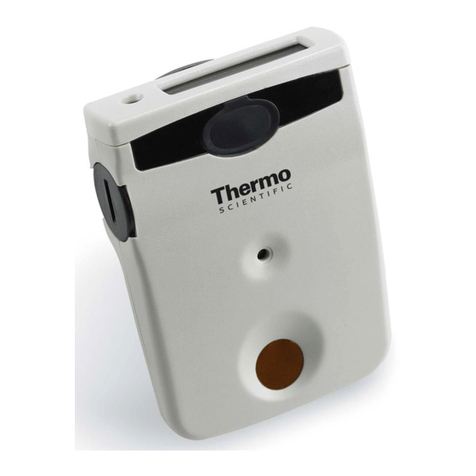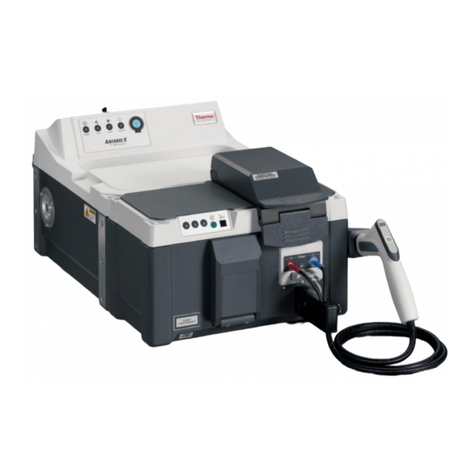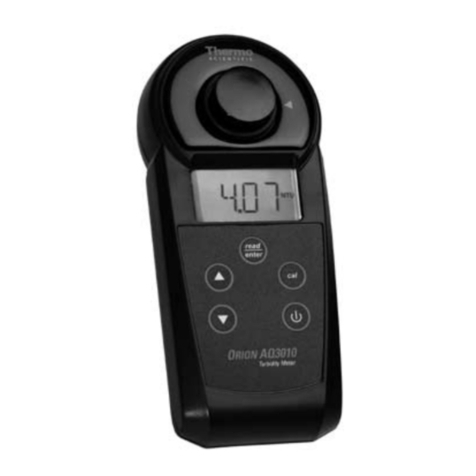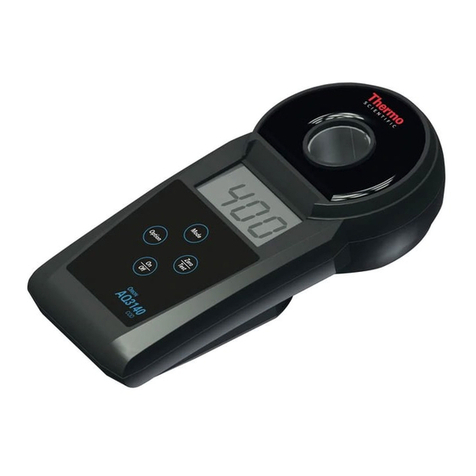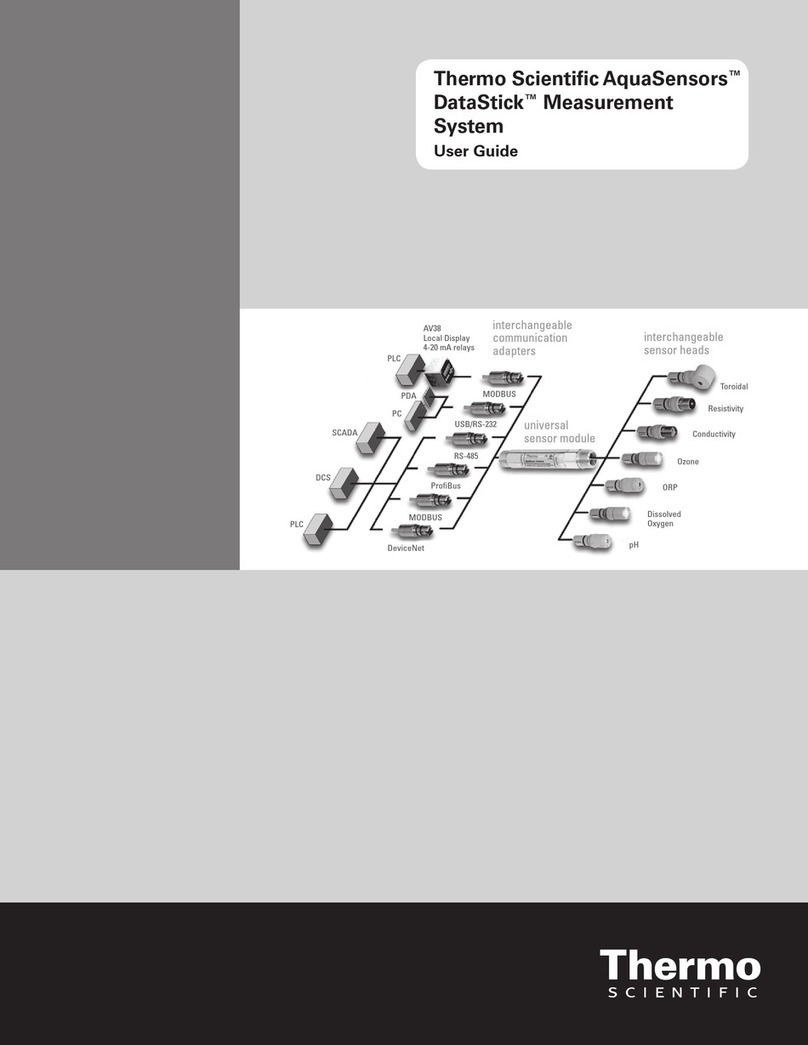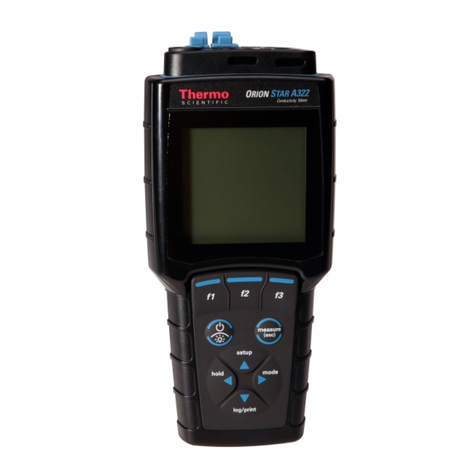Phosphate LR 0.05 - 4.0 mg/l Method Preparation
For USEPA regulatory use, valid range 0.15 - 4.0 mg/l PO4
0.0.0
RESULT
RESULTRESULT
PLr
Perform zero calibration (see “Operation”).
Add one PHOSPHATE LR No.1 tablet straight from the
foil to the 10 ml sample, and crush using a clean stir rod.
Add one PHOSPHATE LR No.2 tablet straight from the
foil to the same sample and crush using a clean stir rod.
Allow to dissolve completely, cap the vial, and align the
∇and ∆marks.
Wait for a color reaction time of 10 minutes!
Press the "zero/test" key.
The method symbol flashes for approx. 3 seconds.
The result is shown in the display in mg/l PO4.
Measuring tolerance: ±0.1 mg/l PO4
Method notes
Observe application options, analysis regulations and matrix effects of
methods. Reagent tablets are designed for use in chemical analysis
only and should be kept well out of the reach of children.
If necessary, request material safety data sheets.
Ensure proper disposal of reagent solutions.
1. Always adhere to the sequence of tablet addition.
2. The aqueous sample solution should have a pH of between 6 and 7.
Only phosphate (V) ions react.
3. Interferences:
High concentrations of Cu, Ni, Cr(III), V(V) and W(V) causes interfering
color. Silicates do not interfere with the analysis (masked by citric acid
in the tablet).
Notes
Conversions
mg/l PO4x 0.75 = mg/l P2O5
mg/l PO4x 0.33 = mg/l P
Optics: LED: λ= 660 nm
Battery: 9 V block battery (life = approx. 600 tests)
Auto-OFF: Auto unit switch-off occur approx. 15 minutes
after a key was last pressed.
Ambient conditions
:
5-40°C
30-90% rel. humidity (non-condensing)
Compliance:
DIN EN 55 022, 61 000-4-2, 61 000-4-8,
50 082-2, 50 081-1, DIN V ENV 50 140, 50 204
FCC Part 15 Class A
ICES – 003 Issue 2
Technical data
Operation
User messages
METHOD
METHODMETHOD
METHOD
METHODMETHOD
0.0.0
RESULT
RESULTRESULT
÷Err
EOI
-Err
PLr
Switch the unit on using the "power" switch
This display shows the method. Press the "mode" key
until the desired method is displayed.
Fill a clean vial with the sample up to the 10 ml mark,
screw the cap on, and place in the sample chamber with
the ∇vial mark aligned with the ∆housing mark.
Press the "zero/test" key.
The method symbol flashes for approx. 3 seconds.
Confirms zero calibration.
After zero calibration is completed, remove the vial from
the sample chamber.
The characteristic color starts to appear after the addition
of the reagent tablet(s) (see "Method Preparation").
Cap the vial again and place in the sample chamber with
the ∇and ∆marks aligned.
Press the "zero/test" key.
The method symbol flashes for approx. 3 seconds.
The result appears in the display.
Repeat the analysis:
Press the "zero/test" key once again.
New zero calibration:
Press the "mode" key until the desired method symbol
appears in the display again.
Light absorption too great. Reason - e.g. soiled lens.
Measuring range exceeded or excessive turbidity.
Result below measuring range limit.
Replace 9 V battery immediately; no further analysis are
possible.
Avoiding errors in photometric measurements
1. Thoroughly clean vials, caps and stir rod after each analysis in order
to prevent carry-over errors. Even minute reagent residues lead to
incorrect measurements. Use the supplied brush for cleaning.
2. Ensure that the outer walls of the vials are dry and clean before performing
the analysis. Fingerprints or water droplets on the light entry surfaces of
the vials lead to incorrect measurements.
3. “Zero calibration” and “Test” must be performed using the same vial,
since different vials can possess slightly different tolerances.
4. For “Zero calibration” and “Test”, ensure that the vial is always positioned
in the sample chamber in such a way that the graduation with the white
triangle points toward the marking on the housing.
5. Always perform “Zero calibration” and “Test” with closed vial.
6. Bubbles on the inside walls of the vial can lead to incorrect
measurements.
To prevent this, cap the vial and remove the bubbles by swirling the vial
before performing the test.
7. You must prevent water from penetrating into the sample chamber. The
entry of water into the housing of the photometer can destroy electronic
components and lead to corrosion damage.
8. Soiling of the lens (LED and photosensor) in the sample chamber leads
to incorrect measurements.
Check - and if necessary clean - the light entry surfaces of the sample
chamber at regular intervals. Clean using a moist cloth and cotton balls.
9. Always add the reagent tablets to the sample straight from the foil without
touching them with your fingers.
10. Major temperature differentials between the photometer and the
environment can lead to incorrect measurements - e.g. due to the
formation of condensate in the area of the lens or on the vial.
Specified tolerances at T = 20 °C.
11. For best results pipette samples.
Calibration Standards
Standards for calibration should be prepared similar to samples.
LO BAT
zero
test
power
zero
test
zero
test
Correct filling of the vial
correct wrong
10 ml 10 ml
Orion
AQUAfast
®
II Photometer Phosphate LR


